With its prime location near the Atlantic coast and close proximity to 
View from path between two castles looking back towards Sintra.
They have a combined ticket booth for the Castelo dos Mouros and the Palacio Nacional da Pena, but modern commerce and spectacular view are about the only things shared by these two venues. As a sojourner, you meet Castelo dos Mouros first as it stony walls line a ridge visible from the main center of Sintra. It and elevation shield the Palacio National da Pena from view until you are nearly upon it. From city center you walk up nearly endlessly, up through the winding streets and stores, abandoned buildings of varying degree of salvagability, and along stone walls of retention. It is a bumpy walk in which you remain ignorant of the beauty you will find and the difficulty of journey you will face.
In truth, the outer wall entrance to the Castelo dos Mouros could go unnoticed if it were not for a wooden door. Plucked among miles of stone and mortar is a medieval looking, dark wood, revolving door. Years of moisture have accumulated upon its pores and unleash today a subtle musty scent. Passing through the gate, you begin to see for the first time the climb that lies ahead. A stone path traverses the mound, resilient but not enough to the runoff and visitors that have come before us. The green canopy emerges with more detail as a mixture of evergreen, oak, and sycamore that have grown unimpeded for centuries and stand like great Redwood.
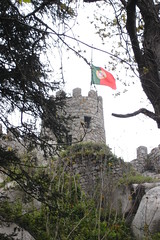
Flags flew at half mass in rememberance of the Pope.
Crossing many layers of walled defense as if slicing through an onion, you eventually enter the sweeter, richer reality of the main castle after a five minute walk. First built by the Moors (hence the name) over a thousand years ago and later captured by Christian forces before being abandoned several hundred years ago, the Castelo dos Mouros is a castle in ruins. The bare stone walls and boxy lines create an expectation for Robin Hood’s inevitable return and a seemingly endless number of paths to and fro as well as stunning views of the city. Natural boulders are built upon as a retreating ice left them and are a clear sign of nature being hemmed in by encroaching societies. A great cistern lies at the center of the castle and still holds water that you may need if encroaching marauders should return unexpectedly during your stay. The outer walls of the castle which stand high above the town seem more like the
As the eye sees, the Palacio Nacional da Pena is separated from Castelo dos Mouros by little distance but enormous purpose and style. Originally a convent that was then converted into a royal castle by some of
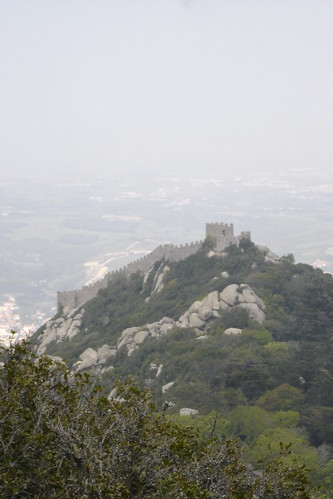
Perched above, a view from the Palacio captures the Castelo in its frame with Sintra in the background.

Fog rolled in and looking up from the Castelo, the Palacio disappears.
The Palacio is grand in a very Portuguese way, with large stone walls lines with elaborate tiles that create patterns only imagined by M.C. Escher. As you wind your way more intimately into the castle, the grandeur increases and you eventually are placed within limitations and camera is banned and rope-lines appear.
When this location was converted from a nunnery to a castle, the original structure seems to have survived largely intact and was built upon as a wasp would build upon its nest, creating new outer reality and defenses for what remains an interior known by many past generations. Walls, ceilings, and a courtyard very reminiscent of many Christian creations have been morphed by paint and by tile into a personal residence with rooms for the king, queen, queen’s attendant, and countless other purposes. Fareast antiquities and oddities are displayed in their own rooms and in such a way that you feel stunned at their beautiful, exotic existence. Personal exposure to these cultures and ornate beings are forgotten, and you feel like a child of
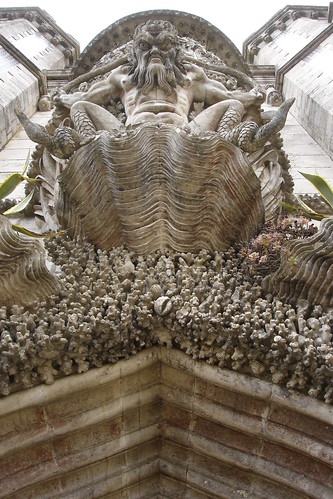
Looking up can be a scary sight if you happen to catch Neptune.
Opulence can be intoxicating, but inevitably reality returns. On our journey through the Palacio, reality came in the form of a security guard. Charged with protection and preservation, but human and tempted by addiction and want, at the top of the top of the Palacio, where no cameras are allowed and the sun strikes you with force, a guard spoke slowly and heavily to the two other tourist on the same large balcony we occupied. “Can you offer me a cigarette?” I think the opulence had been lost on this guard through the wear of time and slow exposure like a vaccine.
The views from the Palacio were utterly amazing. A town lies all around. A sea lies to the side and covers the horizon. It’s easy to see how this location became the prime plot and hard to believe that it will not continue to change hands in the next millennium.
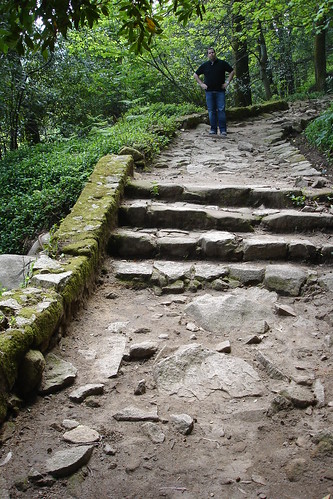
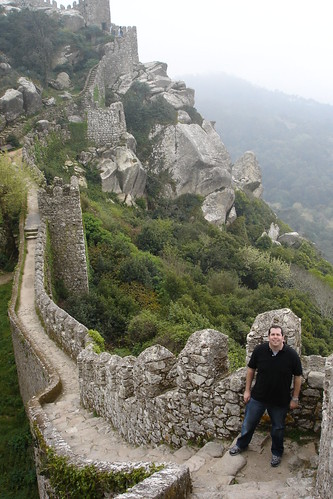
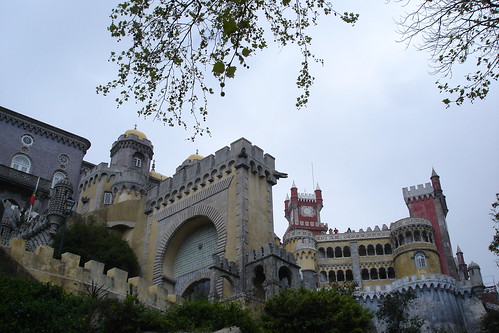
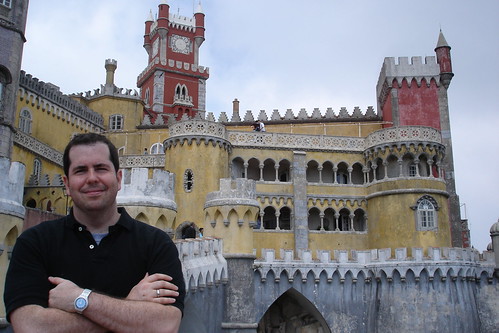
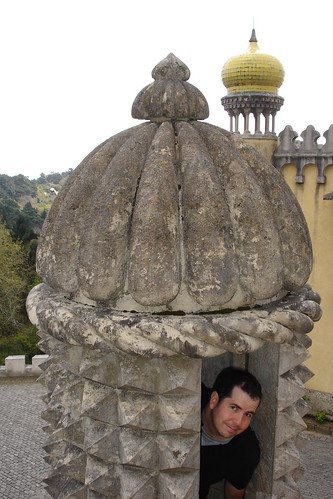
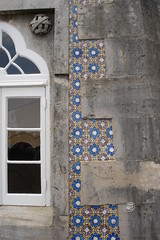
No comments:
Post a Comment